The Richest Girl in the World (1934)

via: https://en.wikipedia.org/wiki/The_Richest_Girl_in_the_World_(1934_film) Unless otherwise noted, all images are my own.
This movie is about–you guessed it–the richest girl in the world and her quest for love! The title character is fictional, but screenwriter Norman Krasna‘s story was most likely inspired by the lives of two famous heiresses in the 1930s: Doris Duke and Barbara Hutton.
I’ve always thought that Duke was the clearer inspiration, but I’m biased as a Duke nerd. Duke’s father, James, who ran the family’s enormous tobacco and power companies (and created the Duke Endowment and Duke University), died in 1925 when she was only twelve. He left her about 700 million dollars in today’s money, a fortune that continued to grow. (In fact, when she died in 1993, she left most of her $1.3 billion to charity.)
She became known as “the richest girl in the world,” but along with the money came security threats and unwanted celebrity. Like the title character in this movie, Duke reportedly used fake names, guarded her privacy, and remained wary of fortune hunters all of her life. You can read more about her here.
The other “richest girl in the world” was Barbara Hutton, heir to her grandfather’s Woolworth retail empire and her father’s investment banking fortune. She was worth an estimated $1 billion dollars (in 2017 cash) when she turned 21 in 1930. She was a famous socialite and married seven times, including three years as Mrs. Cary Grant in the 1940s. You can read more about her here.

Doris Duke, “the richest girl in the world” visited Hollywood “incog” (incognito) in Movie Classic Magazine, July 1934 via: http://archive.org/stream/movieclassic05moti#page/80/mode/2up
This is all to say that there were two very visible “richest girls in the world” in the public imagination when this movie was released in September 1934. Plus, Duke was still single, and Hutton was a newlywed (her first marriage was in June 1933) when the film came out, which just added to the fascination.
This movie also tapped into a trend for stories about very rich people. They flourished on the screen in the 1930s despite (or perhaps because of) the Great Depression. The “madcap heiress” was a fixture in screwball comedies during the decade, and many other movies focus on the super rich. See It Happened One Night (1934), My Man Godfrey (1936), Bringing Up Baby (1938), and The Philadelphia Story (1941), among others.
This movie fits into those categories and also includes the popular trope of the “normal” guy/gal tossed into the fancy world of the wealthy. See Kept Husbands (1931), Chance at Heaven (1933), We’re Not Dressing (1934), Easy Living (1937), and Holiday (1938), for example.
The first two films in that list feature Joel McCrea as the average, hard-working man who falls for a wealthy woman. He’ll follow that same trajectory in The Richest Girl in the World–he played “average” and “aw-shucks” combined with hidden integrity and obvious handsome quite well. It’s easy to believe a glamorous heiress would like him, and also easy to believe that he would be a tiny bit uncomfortable in her world.
This movie’s journey to the theater began when young screenwriter Norman Krasna sold his story to RKO for $4,000. Fun fact: Krasna started as a playwright before getting hired in Hollywood as a staff writer. He was only six movies into his career when he wrote Richest Girl, but he would receive his first of four Oscar nominations (Best Original Story) for this film. During his forty year career in Hollywood, he wrote all sorts of great films, including Hands Across the Table (1935), Fury (1936), Bachelor Mother (1939), It’s a Date (1940), Mr. and Mrs. Smith (1941), White Christmas (1954), and Indiscreet (1958). He finally took home the award for Best Original Screenplay for Princess O’Rourke (1943), which he wrote and directed.

Photoplay, December 1934, via: http://archive.org/stream/photo47chic#page/n649/mode/2up
RKO assigned veteran director William Seiter to bring Krasna’s script to the screen. Seiter started in movies in 1915 and worked until 1954 on dozens and dozens of films, including Rafter Romance (1933), Chance at Heaven (1933), Roberta (1935), The Little Princess (1939), and You Were Never Lovelier (1942). He was efficient and experienced, and specialized in comedies. As Fay Wray said, “Seiter was born understanding laughter.”
The studio originally intended to star Ann Harding in The Richest Girl in the World, but that plan was eventually scrapped in favor of Miriam Hopkins, whom the studio borrowed from Paramount. She had found great success in classics such as Trouble in Paradise (1932) and Design for Living (1933), and she was a hot property in 1934.
RKO paired her with McCrea, who quite literally grew up in Hollywood. He worked as a stuntman/extra for a few years before landing his first big role in The Silver Horde (1930) when he was twenty-five-years old. His career skyrocketed from there and he began starring with some of the biggest actresses of the day in dramas, comedies, and westerns. His most famous films, Foreign Correspondent (1940) with Hitchcock, and the Preston Sturges comedies Sullivan’s Travels (1942) and The Palm Beach Story (1942), were a few years away when he made Richest Girl, but by 1934 he was definitely a rising star. But he was nearing the end of his five years with RKO. He was unhappy with the constant loan outs to other studios and his recent roles, so after this movie he began extricating himself from the studio. He bounced around to Fox, MGM, and Paramount before signing with Samuel Goldwyn.
Fun fact: this was the first of five movies starring Hopkins and McCrea. They’d follow Richest Girl with Barbary Coast (1935), Splendor (1935), These Three (1936), and finally Woman Chases Man (1937), one of my favorite screwball comedies.

Anyway, Fay Wray rounds out the triangle in her second film with McCrea after The Most Dangerous Game (1932). She was also a popular star, and had recently appeared in her most famous movie, King Kong (1933).
Besides the stars, we’ve also got excellent and prolific character actor Henry Stephenson, and British actor Reginald Denny (perhaps the most English name ever!) Denny had been a star in silent films, but became a supporting actor in talkies.
To the film! We begin on a gloriously art deco ship crossing from Europe to New York. The ocean liner might be carrying the notorious and fiercely private heiress Dorothy Hunter, the “richest girl in the world.”
But no one knows for sure because the only confirmed photo of Hunter dates back two decades. See what I mean by “fiercely” private?
Dorothy (pronounced in the Mid-Atlantic style with three syllables: “Dor-ahh-thee”) is now twenty-three, but she has always shunned the spotlight, which makes it difficult for rabid reporters and gossiping passengers to confirm her presence. (And enables the ensuing mistaken-identity romance.)
Dorothy’s father was a tycoon of unspecified industries, but he and her mother went down with the Titanic. They left her an immense fortune and controlling shares in the various Hunter companies, which made her the richest girl in the world when she was just a toddler.
Dorothy’s guardian, John Connors (Henry Stephenson), made it his duty to protect the tiny heiress after her parents died. John and Dorothy have maintained a high level of privacy ever since. Even the Hunter Company board of directors have never seen Dorothy. But today she and John are visiting the headquarters for the board’s annual meeting.
Dorothy has broken out of her bubble to announce her upcoming marriage. But, oddly, she refuses to sign the minutes of the meeting because it is too much trouble to remove her gloves. I need to add that excuse to my repertoire.
After the meeting, Dorothy and John return to her estate outside of New York City. John takes the unsigned document into the billiard room where a blonde signs the name “Dorothy Hunter.” Something is afoot!
We quickly learn that the real Dorothy is the blonde dame (Miriam Hopkins), and the brunette is her secretary/best friend Sylvia Lockwood (Fay Wray). Dorothy is so private (verging on anti-social and misanthropic) that Sylvia often impersonates the heiress in public. (To try and keep the mistaken identities straight, I will use quotes around their names to indicate when they’re in disguise; “Dorothy” is actually Sylvia pretending to be Dorothy, for example.)
Dorothy and Sylvia have been constant companions for six years, but Sylvia and her husband Phillip (Reginald Denny) would like to start their own life back in England where Phillip’s family lives. Dorothy can barely fathom life without Sylvia, but she tells the newlyweds they can settle in England as soon as she gets married. Dorothy’s marriage announcement was real even if the bride was an imposter.
Then Dorothy’s fiance, Don (George Meeker) arrives for some pool. But something’s off. He’s nervous and noticeably tipsy, for one thing. (Dorothy uses the adorable phrase, “Little drunkie, huh?” when he misses the ball.) But besides the whimsy of midday drunkenness, Dorothy becomes noticeably tense as soon as he enters the room.
Soon the truth comes out: Don wants to end their engagement. They were never in love, which was fine because Dorothy doesn’t believe in it, but Don has decided that he can’t marry the richest girl in the world. He would never be sure if he was marrying her because of the money or not. As he says, “When someone marries a queen, does he love her, or is it just to wear a crown?” Also, he has fallen in love with someone else. But rather than fixate on that powerful excuse, Dorothy gets bummed about the money thing. Will she ever find anyone to love her?
Poor little rich girl in the chic costume by Walter Plunkett!
Besides the costumes, be on the lookout for lovely interiors. Dorothy’s houses are stunning, as they should be!
That night, Dorothy watches Sylvia and Phillip canoodle on the terrace and falls into melancholy. Is this what her life will be from now on? Watching other people find happiness while she hides from the world, afraid to trust anyone to like her for herself and not her money?
How terribly fancy to wear black tie for dinner at home! It’s another world. Fun fact: Fay Wray modeled two of the Walter Plunkett-designed costumes in Photoplay:


Dorothy remains out of sorts the next day, so she asks Sylvia to impersonate her at her own garden party. It’s a very chic affair with all the gloopy delicacies of the 1930s served on silver and fine china.
While Sylvia flits around pretending to be Dorothy, the real heiress pretends to be the secretary. She spends the day fetching lemonade and being ignored by men who would rather be talking with “Dorothy.”
It’s hard to feel too sympathetic for Dorothy, but the movie does a good job showing how invisible “Sylvia” becomes when “Dorothy” is around. The celebrity and wealth that comes with being the “richest girl in the world” fascinates everyone in its orbit, even the other blue-blooded moguls at the party. Either Dorothy is hounded as herself or she is ignored as “Sylvia.” There is no middle ground.
Anyway, Dorothy eventually gives up and heads for the billiard room. But there is a man in there. And he’s handsome. It’s Anthony “Tony” Travers (Joel McCrea) and he is as delightful and down to earth as he is cute. He doesn’t even mind when “Sylvia” beats him! Plus, he mocks Miss Dorothy Hunter as a killjoy and acts unimpressed and uninterested in the heiress.
Dorothy delights in his independent attitude, and becomes absolutely giddy when he asks her to go canoeing with him. (The mistaken identities that run rampant in this film were a popular trope in classic Hollywood. For more on that, visit my History Through Hollywood: Love.) She introduces him to “Dorothy” and runs to get a sweater before their canoe date. Look at how Tony smiles at her!
But by the time real Dorothy gets to the lake, Tony and fake Dorothy have gone on a canoe ride without her. Tony isn’t as freethinking as she thought. Phillip is accustomed to men flirting with his wife when she plays the heiress, but it’s a blow to the real Dorothy. She thought that Tony was different.
So she chases the couple in a speedboat and knocks them into the lake. She’s not the most mature woman.
Fun fact: some of these scenes were filmed on location at Lake Arrowhead east of Los Angeles, and McCrea remembers the cast got to enjoy the beach and speedboats in their free time.
Later, Dorothy (still masquerading as Sylvia) and Tony guzzle scotch in a darkened room while they wait for his clothes to dry. He explains that he didn’t really mean to switch canoe partners, and she forgives him. The alcohol helps.
He also goes on a rant about how you shouldn’t hold wealth against a person. He wouldn’t marry the richest girl in the world for her money, but if he loved her, he wouldn’t not marry her because of it.
It’s exactly what wounded Dorothy wants to hear. Don dumped her because he was intimidated by her wealth, and she’s terrified of fortune hunters who would marry her solely for her money. A man who doesn’t care fits the bill!
Hopkins and McCrea are the cutest and bounce off of each other quite pleasantly. I personally prefer Hopkins when she is less serious and more screwball, but they’re still fun to watch in this movie. Fun fact: in 1938, Hopkins told Modern Screen that “We had a lot of fun making [Richest Girl]. It only took a month, and every afternoon we’d knock off at four to play tennis.” Sounds pretty great!
The next day, Dorothy hatches a plan. She and Sylvia will continue their masquerade in order to test Tony. The real Dorothy will push him towards fake Dorothy, who will flirt and make him think he has a chance. Then they will see which girl he chooses. Dorothy will only take him if he chooses her as “Sylvia.”
Sylvia, Phillip, and John think that Dorothy has gone nuts. What man would pass up the richest girl in the world for a secretary? Dorothy is embarking on a path towards certain heartbreak. But she refuses to listen, so off they go!
The plan is a version of the ugly old woman/sorceress in the woods trope from fairy tales. Will the hero be as kind to the beggar as he is to the beautiful princess? Most likely not, but it’s a good test of character, I guess. Though in this movie, Dorothy has upped the ante. Will Tony propose to the beggar when he could marry the princess? We shall see, but it’s doubtful.
Despite Tony’s initial disinterest, Dorothy convinces him that “Dorothy” likes him and that he has a shot with her. So he begins courting the heiress as well as the secretary. John could probably stop the nonsense if he wanted, but he is happy to see Dorothy excited about something for once. So he lets it go.
The group goes dancing and Dorothy pushes Tony at her long-suffering friend. Throughout all of this craziness, Phillip remains a very good sport. It’s a pleasure to see spouses who aren’t consumed by jealously all the time. It might be due to the pre-code nature of the film–I think a later movie would make more of a noble fuss about Sylvia and Philip’s marriage and how terrible Sylvia feels about flirting with Tony. But we’re right on the cusp with this one (films premiering on or after July 1 needed to pass the PCA office), so that aspect is minimized.
Costume appreciation break: this sparkly lattice number signals Dorothy’s first interest in clothes. Once she meets Tony, she buys a bunch of new gowns because she wants to look her best for him.
Tony likes “Dorothy,” but he is happiest with “Sylvia.” But Dorothy isn’t content with that. She needs him to choose her over everything, so the rest of the movie concerns her nutty efforts to make him fall for “Dorothy” even as she falls in love with him. And even as he tries to romance “Sylvia.”
For example, when Tony explains that he can’t afford the “campaign” to court the richest girl in the world, Dorothy offers to bankroll him. (She claims that she will get the money by trading Hunter company stocks thanks to insider information.) But really she just gets John to arrange it over her morning coffee. What’s $8,000 to the richest girl in the world?
Despite her push towards “Dorothy,” real Dorothy still arranges time alone with her love to make sure he knows that he can have “Sylvia,” too. A night at the Hunter Adirondack Lodge suffices.
Things get sexy in front of the fire. Tony tells a strange, nonsensical story about Moses. McCrea remembered much later that he had no idea what this monologue meant: “She sat on the davenport and I laid down on it with my head in her lap, spouting all this dialogue which everybody said, ‘Gee, you read that great.’ I didn’t have a clue what I was talking about. It was way far out for me….Krasna said, ‘You did it beautifully.’ I didn’t dare tell him, ‘Please explain it to me. I don’t know what I’m saying.'” It worked on Dorothy, though!
Tony tells “Sylvia” that he wants her, not the heiress. When she reminds him that he came to the Lodge to propose to “Dorothy,” he ruins it by adding, “Dorothy wouldn’t have me anyway.” Dummy.
So Dorothy decides that she won’t be sure if Tony loves her until he has proposed and been accepted by “Dorothy” and then chooses “Sylvia.” He must pick the secretary even though he can have the richest girl in the world. She can’t bear to be second choice even though John, Sylvia, and Phillip beg her to stop.
The next evening, Dorothy encourages Tony to propose to “Dorothy,” though she hopes that he will come running to her instead and claim he doesn’t want to marry the heiress. But over indoor s’mores (this was a thing back then), Tony asks “Dorothy” to marry him and she accepts, naturally.
The next scene is one of the funniest in the movie: Tony beams and embraces “Dorothy” as he shares the great news of their engagement, but everyone else appears visibly upset. Sylvia looks like a frightened rabbit, and Dorothy looks like she might weep and vomit at the same time. Dorothy immediately runs out of the room, then Phillip excuses himself, and even John declines to toast the new couple. Then “Dorothy” asks Tony to escort her to her room so she can go to bed. Poor Tony is a little confused but mostly happy…
…until he sees Phillip sneak into “Dorothy’s” room! One can’t excuse such a lack of virtue even in the richest girl in the world! But I’m mostly bummed that the movie didn’t do more with this comical situation. A few near misses of Sylvia and Phillip getting caught kissing or sharing a room as Tony cluelessly courts the married lady would have livened things up.
Anyway, the next morning a very angry Tony puts on his highest waisted trousers…
…and confronts his new fiancée about her terrible indiscretion.
You’d think that this might prompt the grand reveal that “Dorothy” is actually Sylvia, but instead the real Dorothy just digs in even deeper. She announces that she slept in that room last night, so Phillip was coming to see her!
John and Sylvia are horrified. Not only has Dorothy continually pushed Tony towards Sylvia to the point of an engagement, but now she claims to be a very bad lady, thus destroying any chance that Tony would marry her! But she didn’t want to be second choice blah blah blah, and she wouldn’t have accepted Tony if he had chosen her because he thought “Dorothy” was without virtue. So now everyone is upset.
 Breakfast is an awkward affair, especially when Phillip arrives and asks everyone how they slept…! He doesn’t know that Tony saw him sneak into the room. Phillip’s cheerfulness and accidental double entendres annoy Tony so much that he punches the poor man before shouting at Dorothy, “If you have one shred of decency left in you, I’ll find it. Or I’ll beat it into you!” Yikes. The caveman element isn’t the greatest.
Breakfast is an awkward affair, especially when Phillip arrives and asks everyone how they slept…! He doesn’t know that Tony saw him sneak into the room. Phillip’s cheerfulness and accidental double entendres annoy Tony so much that he punches the poor man before shouting at Dorothy, “If you have one shred of decency left in you, I’ll find it. Or I’ll beat it into you!” Yikes. The caveman element isn’t the greatest.
Then he picks her up and carries her to a waiting car. He chose the slutty secretary over the pristine heiress after all!
Next thing we know, the pair are married, though Dorothy still hasn’t revealed her true identity. In fact, we never get to see that moment because the movie ends with Tony and “Sylvia” exchanging sexy banter about dress buttons on the deck of an ocean liner.
The end! And so Tony proved that he wasn’t a gold digger, and Dorothy got a husband who loves her for her.
Although this movie mixes it up a little, the mistaken identities and gold digger themes come up a lot in films from this era. Usually it’s a poor woman and a rich man. If she’s truly “pure” and not a real gold digger, she starts by explaining that she is sick and tired of being poor, or she is determined to marry rich because she watched her parents’ love disintegrate as they struggled to make ends meet. She’s “through with love,” and just wants financial security.
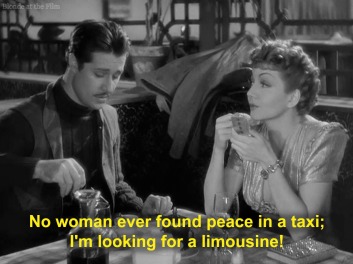
Midnight (1939)
Her resolution is tested when she falls in love with a non-millionaire. Either she ends up marrying for love, and therefore proving that she was never really a nasty gold digger, or she gets a very happy surprise when her non-millionaire turns out to be loaded. He was lying about it the whole time! She forgives him at once. Which is what I imagine Tony will do when he finally realizes that he married Dorothy, not Sylvia.

Moon Over Miami (1941)
This film was in production from July 13 to August 15, 1934. It premiered about a month later (things moved fast then!) on September 21. It was a hit: Variety called it “a pip picture for Miriam Hopkins [in] the sort of role actresses dream about. Eighty minutes of unerring entertainment.” Motion Picture Herald‘s August 4 edition described the movie as a “timely, semi-topical romantic comedy” with “gayly comic,” “tensely dramatic,” and “highly entertaining” situations along the way.

Motion Picture Herald, September 15, 1934, http://archive.org/stream/motionpictureher116unse#page/n1003/mode/2up/search/%22Joel+McCrea%22
In September, another review in Motion Picture Herald aimed at theater owners called it “a lively, completely entertaining comedy-drama” and suggested that exhibitors hinge publicity on the title as well as the stars.
The New York Times reviewer Andre Sennwald wrote that it is a fairly typical story “But Norman Krasna, the bright young scenarist who is its author, examines the situation with fresh intelligence and humor. His heroine is a cagy girl who is not to be fooled by the things a man says after dark; his hero is not at all convinced that true love is to be preferred above riches. Between them they produce an agreeable sum of humor…”
Sennwald also complimented Seiter and the actors, writing that, “William Seiter, who directed the film, succeeds in convincing the spectators that the situation is not nearly as improbable as it sounds. Since several of his players give better performances than is their normal habit, perhaps Mr. Seiter deserves an additional sprig of laurel. As the wealthy girl, Miriam Hopkins, has a cool and dominating demeanor that promises trouble for young Tony some time in the future. Henry Stephenson, who seems to grow more mellow and delightful with each film, enkindles your affections as the young woman’s guardian and philosopher. As the rich girl’s double, Fay Wray uncovers a talent for light comedy that few had suspected. Joel McCrea is highly agreeable as the young man who is the unwilling guinea pig for the heroine’s fiendish experiments.”
As I mentioned, Krasna was nominated for Best Original Story, but he lost to Arthur Caesar for Manhattan Melodrama. Many years later, he discussed the movie in relation to his writing philosophy:
I always get in my social comment — but limited to what the subject needs. I certainly don’t go on the wrong side. I will not write that if you have a lot of money you’re a better person…. For instance, The Richest Girl in the World. If I use as a plot that the richest girl in the world poses as her own secretary in order to get some privacy, how clever! The only thing is, eventually she ought to fall in love and get married. I like that idea. So what I do is–the fella falls in love with the richest girl in the world, only he thinks she’s the secretary. There you are–she’s pure in heart. To his credit. That’s everybody’s daydream. I give you a reward. I make you laugh. But I always show you what the right side is: your emotions go along with the underdog.
This movie was remade in 1944 as Bride by Mistake with Laraine Day and Alan Marshal. Nine years later, it got a looser adaptation in The French Line (1953) starring Jane Russell and Gilbert Roland.
For more, follow me on Twitter, tumblr, pinterest, Instagram, and Facebook. And for great articles on this movie, visit PreCode.com and Immortal Ephemera.
You can buy this movie here, and as always, thanks for reading!







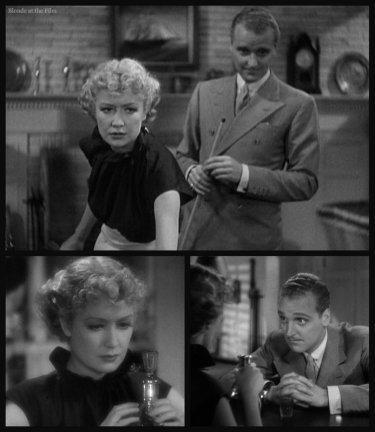





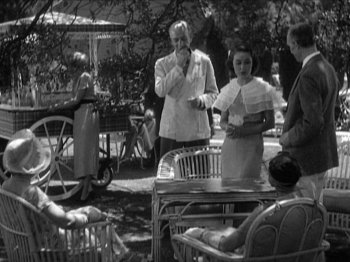

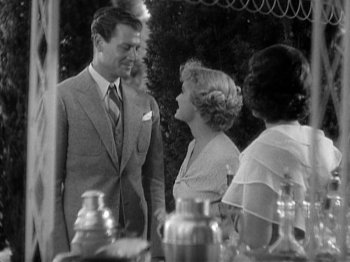
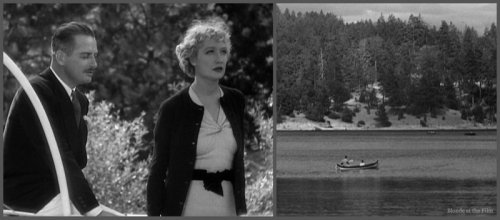



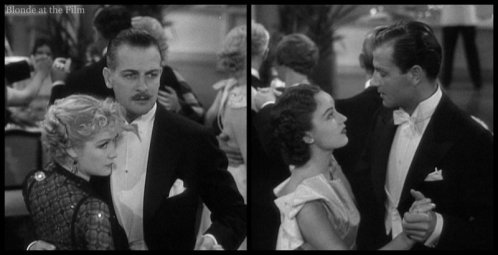


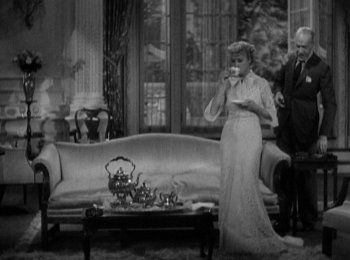


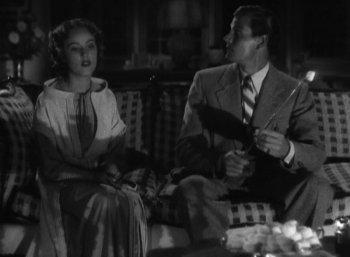


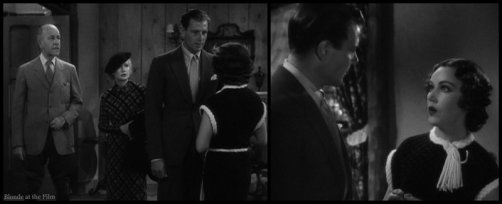

I enjoyed reading this article. It is very interesting and entertaining. You wrote some fascinating things about this movie. You are a good writer.
By the way, I would like to invite you to join my blogathon, “The Great Breening Blogathon:” https://pureentertainmentpreservationsociety.wordpress.com/2017/09/07/extra-the-great-breening-blogathon/. It is celebrating the life and work of Joseph Breen, the enforcer of the Motion Picture Production Code between 1934 and 1954. As we honor his birthday, which is on October 14, we will be discussing and analyzing the Code era, breening films from other eras, and writing about our own ideas for classic movies. One doesn’t have to agree with the Code and Mr. Breen to enjoy that! I hope you will do me the honor of joining. We could really use your talent!
Yours Hopefully,
Tiffany Brannan
Thanks, Tiffany! Unfortunately I won’t be able to participate this year, but thank you for the invitation! I’m looking forward to reading the entries!
I understand that this is a busy time for a lot of people. I hope to hear more from you in the future. I’m sure you will enjoy reading some of the articles, which promise to be interesting.
Yours Hopefully,
Tiffany Brannan
Fun movie, great detailed coverage as always (lots of fun background on this one!). And thank you for the link as well!
Thank you! Your post was great so very happy to link to it!
Your review inspired action. I ordered the film and realized that I did not know much about Miriam Hopkins. Something which I intend to correct. Thanks again for a marvelous well researched review. I like how you cross-compare movie tropes and similar film themes to provide us with more insight into the film itself. You are like a female Dr.Jones finding rarefilmic antiquities lost in the sands of time. Keep at it!
Thank you so much! This made my day! My philosophy is that just a little bit of context/history can make these movies even more interesting, and hopefully more accessible to people who are just beginning to watch old films. I hope you enjoy your Miriam Hopkins exploration!
I watched the film and found it charming. Joel McCrea comes across better then he did in “Chance At Heaven” but I guess the dynamic of the story requires that he be pulled somewhat to the heiress (Dorthy) double as opposed to the actual rich heiress (Sylvia). I did like the two together though. Certainly Miriam as Sylvia did throw a few too many obstacles in the way towards the end of the movie. I guess that is where the suspense of it all comes in! Will he or won’t he? I liked the film and Miriam. Glad I watched it!
Glad you enjoyed it!
Loved this film. Really enjoyed the free wheeling, assertive and honest interactions between Hopkins & McCrea. A great rapport. Liked that there are no villains in this film. The characters well intentioned. There is no tiresome possessiveness or overt jealousies. Their motivations and agendas understandable. Clearly, Hopkins was an expert actress playing many diverse roles during her career in film and on stage effectively. She looked lovely here with her large expressive eyes, porcelain skin, baby fine silky hair and beautiful small well shaped hands with long tapering delicate fingers which she showcased to good effect throughout the film. Georgia born, Hopkins had an odd fractured accent. i.e.,The way she pronounced “dog”, etc. McCrea as always– unassuming, easy going and very attractive. Wray was even more beautiful as a brunette giving an exquisite light comedic performance. Reginald Denny droll and charming with an understated comfortable presence. His overtly affectionately tactile and respectful relationship with Wray allowing her some space to pursue her convoluted plan with Dorothy unusual and engaging. (Interestingly, Denny had another career as an aviation expert & partnered in inventing the military drone.)–Most of all I enjoyed this film’s mid 1930s gorgeous architecture & estate settings, the pristine Lake Arrowhead scenery, the spectacular costumes, evening gowns, men’s classic suits and breathtaking Art Deco interiors, lawns and terraces dancing under the stars.- Classic,
Great descriptions! Always nice to hear from another fan of McCrea and Hopkins!